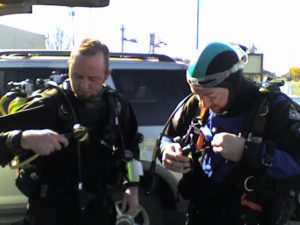I have been evaluating online backup solutions. Currently I backup to an external hard drive. This has two problems:
1. I backup manually and via a script. I don’t do it very often.
2. All backups are onsite. It’s been years since I burned a DVD and dropped it at my parents’ house.
So, I finally decided that I needed automated and offsite backups. After a week and half of research and testing I decided to purchase Mozy.
Read on if you want a more comprehensive review. There are many offerings out there right now. Wikipedia has a list:
http://en.wikipedia.org/wiki/List_of_online_backup_services
I only looked into a handful of these, and looked especially closely at the two major players–Carbonite and Mozy. I should also note I’m running 64-bit Windows 7.
I’ll go over Carbonite and Mozy first, then mention the other services I looked at. Keep in mind that my requirements may not be the same as other users so your mileage may vary. I was looking for a very simple solution–simple because I am lazy and won’t do backups if it takes any effort, and simple because I wanted a product that I could recommend to less technical friends and family.
Carbonite generally had slightly better reviews than Mozy, and seemed the front runner for a while (I had the trial installed for about a week). However…in the course of my research I discovered that it excludes certain file extensions from all backups unless you tell it to include them. Including them is a manual process (there is no “hey please backup everything I tell you” button). To their credit, they do mention this on their website (mostly), and will send you an exhaustive list via email if you ask (I asked and they sent it to me promptly). Here is the help article where they talk about this:
http://cp-carbonite.kb.net/article.aspx?article=1069&p=3
To be fair, the automated backup sets in mozy only back up certain files, similar to what carbonite does. However, if you tell mozy “back up this folder”, it will back up everything in that folder. If you tell Carbonite to backup a specific folder, it will happily exclude a bunch of files by default. Video files are not backed up by default in Carbonite, either, which seems pretty bad to me–how many people have digital camera movies on their computers, or videos from their phones? Here is the default Mozy policy for automated backup sets:
http://support.mozy.com/docs/en-user-home-win/faq/concepts/backup_sets_default_contents.html
Anyway, these exclusions were pretty much a deal killer for Carbonite. Remember how I said I want a simple solution because I’m lazy? That extends to setting it up–if I say “back up this folder”, I don’t want to have to worry about whether or not certain files in that folder are getting backed up. Same thing if I am recommending a backup product to friends or family–I just want them to be able to check a box to make sure the videos of their kids first steps are backed up.
As far as retention of deleted files, Carbonite and Mozy both have deleted files available for 30 days after you remove them from your computer.
Backup with Mozy was much faster than with Carbonite. However, I was on a free trial with Carbonite so that could have affected the speed. And honestly, I’m not terribly concerned with the speed at which the initial backup occurs (I’m backing up about 40GB).
The test restores I did with Mozy (~1.7gb) during the free trial had some issues–about 400 files didn’t make it back. Eventually I got them via a “web restore”. This is a clumsy method but it did get all the files back–and that’s what’s really important in a disaster recovery scenario. I emailed Mozy support about the restore issues and they seemed fairly responsive but also seemed to give mostly “reading from the binder” responses. This was expected considering who their target audience is. UPDATE: I did another restore with mozy on a different computer, this time 2.8GB but a smaller number of files, and didn’t have any problems restoring via the Mozy client.
So there’s the head-to-head. Honestly, if it weren’t for the default file exclusions, it would probably be a toss-up between carbonite and Mozy.
Other services I looked at:
I considered crashplan. They offer unlimited backup at a similar price point to Mozy and Carbonite, but the “free” client is ad supported and it costs $60 for the “pro” version. This was enough that I didn’t even try them.
I installed idrive on one computer. The interface was hideous and complex and I promptly uninstalled it. I would not recommend this to my non-technical friends.
I briefly played around with Jungledisk. You pay per GB for their client to store data with Amazon S3–If you store 20GB or less it is similar in price to Carbonite and Mozy. It seems like a decent system–I decided not to go with them mostly for cost reasons.
SOS online backup had great magazine reviews but awful user reviews. I steered clear. It was also more expensive than other services. One feature SOS touted that other services do not have is unlimited versioning of files (within the limits of your storage space, of course).
Iron Mountain has an online backup service. This is the company we use for off-site tape storage at work. They seem very professional and I expect their online backup service is excellent. I can’t afford it, though; $9/month for 2 GB of backup. If I had mission critical data I would look at Iron Mountain first.
Backup Integrity: From what I’ve been able to ascertain, the online services use RAIDed trays of disks and no off-site backups (I suspect this would not be the case for Iron Mountain, but I haven’t contacted them). If a disaster (earthquake, fire, etc) wiped out the datacenter, and then your local drive crashed, you’d be out of luck. Statistically, the odds of this are pretty low, but it’s something to keep in mind. A backup to an external drive every six months or so isn’t a bad idea, even if you’re using one of the online backup services.
Feel free to post any comments on your own experiences.




